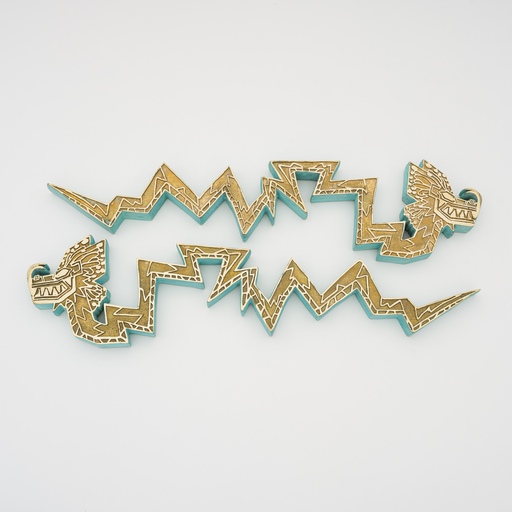Guadalupe Maravilla
Guadalupe Maravilla is a transdisciplinary visual artist, choreographer, and healer. At the age of eight, Maravilla was part of the first wave of unaccompanied, undocumented children to arrive at the United States border in the 1980s as a result of the Salvadoran Civil War. In 2016, Maravilla became a U.S. citizen and adopted the name Guadalupe Maravilla in solidarity with his undocumented father, who uses Maravilla as his last name. As an acknowledgment of his past, Maravilla grounds his practice in the historical and contemporary contexts belonging to undocumented communities and the cancer community.
Combining pre-colonial Central American ancestry, personal mythology, and collaborative performative acts, Maravilla’s performances, objects, and drawings trace the history of his own displacement and that of others. Culling the entangled fictional and autobiographical genealogies of border crossing accounts, Maravilla nurtures collective narratives of trauma into celebrations of perseverance and humanity. Across all media, Maravilla explores how the systemic abuse of immigrants physically manifests in the body, reflecting on his own battle with cancer, which began in his gut. Maravilla’s large-scale sculptures, titled Disease Throwers, function as headdresses, instruments, and shrines through the incorporation of materials collected from sites across Central America, anatomical models, and sonic instruments …
Guadalupe Maravilla is a transdisciplinary visual artist, choreographer, and healer. At the age of eight, Maravilla was part of the first wave of unaccompanied, undocumented children to arrive at the United States border in the 1980s as a result of the Salvadoran Civil War. In 2016, Maravilla became a U.S. citizen and adopted the name Guadalupe Maravilla in solidarity with his undocumented father, who uses Maravilla as his last name. As an acknowledgment of his past, Maravilla grounds his practice in the historical and contemporary contexts belonging to undocumented communities and the cancer community.
Combining pre-colonial Central American ancestry, personal mythology, and collaborative performative acts, Maravilla’s performances, objects, and drawings trace the history of his own displacement and that of others. Culling the entangled fictional and autobiographical genealogies of border crossing accounts, Maravilla nurtures collective narratives of trauma into celebrations of perseverance and humanity. Across all media, Maravilla explores how the systemic abuse of immigrants physically manifests in the body, reflecting on his own battle with cancer, which began in his gut. Maravilla’s large-scale sculptures, titled Disease Throwers, function as headdresses, instruments, and shrines through the incorporation of materials collected from sites across Central America, anatomical models, and sonic instruments such as conch shells and gongs. Described by Maravilla as “healing machines”, these Disease Throwers ultimately serve as symbols of renewal, generating therapeutic, vibrational sound.
He has performed and presented his work at the Whitney Museum of American Art, New York; the Museum of Modern Art, New York; the Metropolitan Museum of Art, New York; the Institute of Contemporary Art, Miami; Queens Museum, New York; The Bronx Museum of the Arts, New York; El Museo del Barrio, New York; Museum of Art of El Salvador, San Salvador; X Central American Biennial, Costa Rica; New York; Shelley & Donald Rubin Foundation, New York; and the Drawing Center, New York, among others.
Museum of Modern Art, NY
Whitney Museum of American Art, NY
Museo Nacional Centro de Arte Reina Sofía, Madrid
Institute of Contemporary Art, Miami, FL






